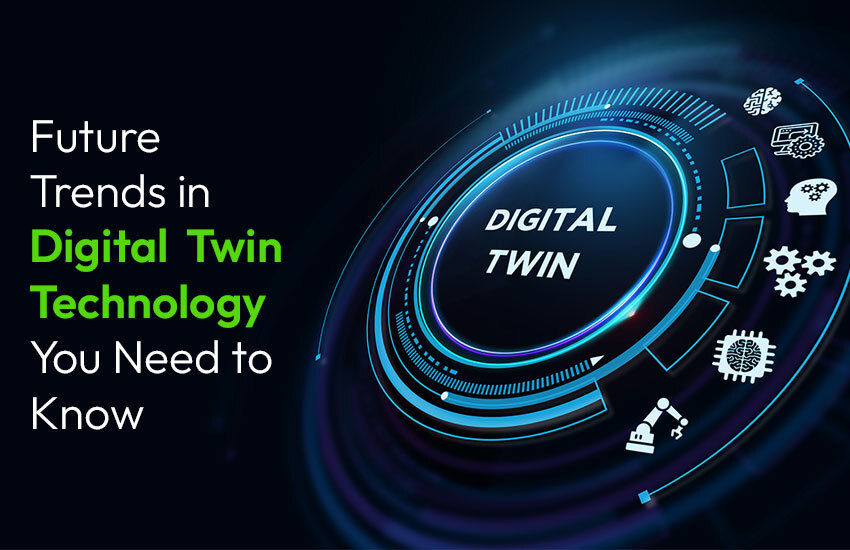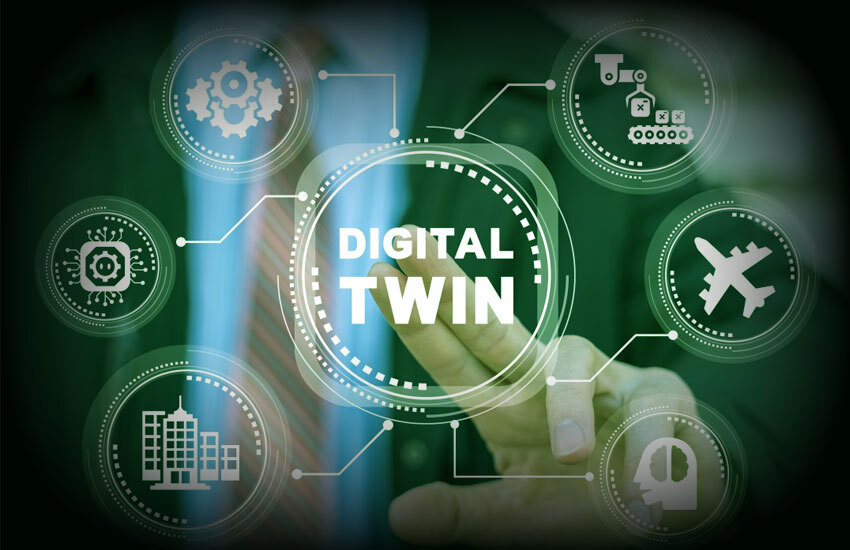
Digital twin technology has quickly evolved from a theoretical framework to a useful instrument that is revolutionizing industries all over the world in the era of Industry 4.0. Digital twins are no longer simply about building virtual copies; they are about building intelligent, self-evolving systems that maximize performance, anticipate problems, and improve customer experience. This is due to the increasing integration of AI in business, predictive analytics, and real-time data analysis. vLet's examine the future trends in digital twin technology for the future and how companies can use this advancement to achieve long-term success.
A digital twin is a virtual, real-time duplicate of a system, process, or actual thing. It helps businesses make AI-driven decisions based on real-world data by enabling continuous monitoring, simulation, and analysis. Smart city planning, healthcare diagnostics, and predictive maintenance in manufacturing are typical digital twin use cases.
Explore real-world applications and key benefits of digital twin technology in our article: “What is Digital Twin Technology? Applications and Benefits Explained”!
Fundamentally, a digital twin in manufacturing enables dynamic communication between digital models and physical operations, offering insights on efficiency, performance, and possible hazards.
The integration of AI is accelerating the capabilities of next-gen digital twins. More autonomous twins that can learn from environmental factors, process feedback, and consumer data analysis will be powered by generative AI and machine learning in the upcoming years.
Principal Advantages:
Advanced analytics through AI ensure fewer disruptions and smarter planning
Generative AI-powered improved simulations to test potential outcomes
Streamlined processes using self-healing technologies and data automation
By anticipating user behavior and providing real-time answers, these intelligent digital twins will not only copy tangible assets but also optimize customer experience.
The convergence of digital twin and IoT technologies will be one of the most significant changes. Businesses may feed real-time data into digital twins using billions of connected devices, facilitating quicker and more precise decision-making.
Demand for real-time digital twins is being driven by this trend, particularly in industries like aerospace, automotive, and energy. By combining sensor-rich IoT devices with industrial digital twins, companies will be able to:
Continuously track asset performance
Automate reactions to irregularities
Boost compliance and safety
AI-driven solutions that can adjust to changing production and market situations depend on these kinds of systems.
Cloud-based infrastructure is making digital twin environments scalable, adaptable, and cooperative. Future cloud-native digital twin software will enable real-time upgrades, worldwide access, and smooth integration with sales automation and CRM AI.
Benefits of Cloud-Native Twins:
Scalability across multinational production facilities
Lower expenses and quicker deployment
Simple teamwork with outside vendors
This trend promises more responsive service models and quicker innovation cycles for sectors that depend on agility and client retention.
Even though digital twin technology in Industry 4.0 has been widely used in manufacturing, its use will spread to industries including smart infrastructure, healthcare, retail, and logistics. Every industry will make use of digital twin use cases that are specific to its own problems.
Digital Twin Expansion Examples:
Healthcare: Personalized therapy using patient-specific digital twins
Retail: Using behavioral targeting to optimize client flow and store architecture
Construction: 3D digital twins are revolutionizing construction with predictive safety assessments and health diagnostics
The evolution of technology from machine-focused monitoring to full business intelligence ecosystems is demonstrated by these digital twin examples.
Digital twins of the future will replicate humans in addition to mirroring machines. Businesses can provide digital depictions of consumer behavior, preferences, and purchasing trends by analyzing customer data. This makes it possible for:
Customization and optimization of voice search
AI-powered improved product recommendations for businesses
Predictive analytics for real-time marketing optimization
For brands that prioritize retaining and fostering client loyalty, these apps are vital. Digital twins with a human focus are probably going to be a key component of CRM AI systems.
Forecasting potential issues before they arise is one of the most powerful benefits of digital twins. Digital twins will foresee problems before they happen thanks to developments in data analysis and AI-powered sales forecasting. Future twins will provide:
Estimating the longevity of machinery components
Predicting the requirement for inventory and product demand
Market and economic scenario simulation
In order to keep businesses ahead of the curve, these predictive tools will change how engineering and business strategy decisions are made.
Sustainability is becoming a differentiator. Companies are adopting digital twins in manufacturing to evaluate sustainability metrics like emissions and energy consumption in real time. Eco-efficiency modeling will be a regular element of digital twins of the future.
This eco-friendly strategy benefits manufacturers:
Reduce material waste
Create environmentally friendly goods.
Respect international environmental norms
Sustainability-focused twins boost ethical company practices and long-term growth when paired with AI-driven solutions.

The move toward unified digital twin platforms, which combine data, software, and hardware under one roof, is another significant trend. Engineers, analysts, marketers, and sales teams will all be able to collaborate in real time thanks to these ecosystems.
Digital twins can communicate with customer engagement modules, prediction systems, and sales automation tools using artificial intelligence in business platforms. This integration simplifies:
Product development lifecycles
Workflows that span multiple departments
Operations of customer relationship management (CRM AI)
Digital twins are transformed from standalone tools to the focal points of business processes by this confluence.
Digital twin technology has a bright, clever future that is intricately linked with AI and IoT. The demand for intelligent, scalable, and user-friendly digital copies will only increase as more complicated technologies are adopted by businesses. Digital twins are opening the door for more intelligent, responsive companies by improving customer experience, modeling human behavior, and anticipating machine malfunctions.
With their sophisticated simulation tools and unique engineering solutions, businesses like Modelcam Technologies are already spearheading this transition. Businesses can achieve new heights of productivity, creativity, and expansion by utilizing the benefits of digital twins.
Let’s connect: www.modelcamtechnologies.com
Email: sales@modelcamtechnologies.com
Mobile no : +91 8237016167
©Copyright 2025. All rights reserved by Modelcam Technologies Private Limited PUNE.